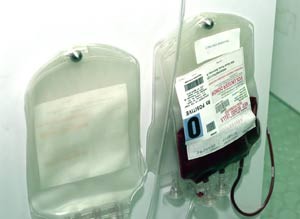More work lies ahead for anti-doping scientists
 Following on from a paper published on Christmas Day last year studying the theoretical detection of blood transfusions via high plasticizer levels in blood, researchers at the anti-doping laboratory in Lausanne appear to have moved things closer towards the eventual validation of the test.
Following on from a paper published on Christmas Day last year studying the theoretical detection of blood transfusions via high plasticizer levels in blood, researchers at the anti-doping laboratory in Lausanne appear to have moved things closer towards the eventual validation of the test.
They have completed tests to detect plastics in samples. “We try to copy the results of Barcelona and Cologne, and it works,” researcher Norbert Baume told The Associated Press, adding that it was ‘encouraging’ to build on the earlier work by those other laboratories.
While environmental and food contamination means that people generally have some levels of plasticizer in their systems, large surges are believed to be indicative of blood transfusions. Plasticizers are contained in some types of blood bags, and therefore infusion of fluid from those bags can also transfer the substance into the system.
Scientists try to ascertain a base level and then look out for sudden increases.
The next step for the Lausanne laboratory is to run further trials in order to try to determine regular background levels. “For us it is quite an early stage. We need to do a clinical study. Then, maybe, we can put forward a cut-off level of plasticizers that could indicate a transfusion,” Baume said.
The test became a topic of discussion last Autumn after Tour de France champion Alberto Contador tested positive for Clenbuterol. Media reports suggested that he also showed high levels of plasticizers. Some have suggested that transfusing contaminated blood might be one reason for his positive test for Clenbuterol; the Spaniard denies ever taking banned products, and said that he has not transfused blood at any point in his career.
Baume said that he believed a validated test would be an indication rather than absolute proof of wrongdoing. He said that it could be used as supplementary evidence in hearings. This has already been stated by WADA chairman David Howman, who said that previous testing used in the food industry proved that measurement of plasticizer levels was reliable.
The latest research from Lausanne seems to move things closer to the point where riders could face sanction for this indirect indicator of wrongdoing.